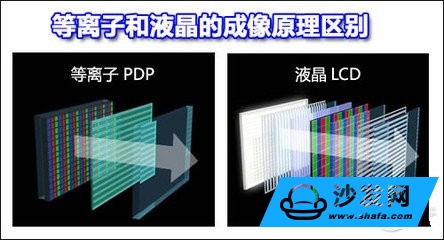
Plasma TV and LCD TV which is better?
1, service life
Most of the initial standards for plasma TVs and LCD TVs were between 25,000 and 30,000 hours, and the lifetime of the new generation of plasma screens reached 60,000 hours. With the development of technology, the life of plasma TVs may be further improved. LCD TVs are also exploring new light source technologies such as LEDs to extend their life.
2, performance indicators
The nominal brightness and contrast index of plasma TVs are higher than those of LCD TVs. The contrast ratios of plasma TVs are basically 3000:1, 4000:1, and 5000:1. The latest ones have reached 10,000:1, and the brightness is mostly 500cdm2~1000cdm2. ; LCD TV contrast index is basically between 400:1-1200, most of the brightness in the 400-800cmm2, only from the nominal indicators, plasma TV is higher than the LCD TV, I believe this is the plasma TV performance to LCD TV The origin of the argument.

3, display effect
The pixel sense of the plasma TV image is stronger, especially the product with a resolution of 852×480, and the LCD TV image is more delicate; in terms of color, the color of the LCD TV is generally saturated and somewhat warm. The color of plasma TVs is more natural and fresh.
4, resolution
Some people say that the resolution of LCD TVs is higher than the resolution of plasma TVs. This argument is not accurate. From the current products on the market, plasma TVs do have a number of products with a resolution of 852×480, but the current market has emerged. Plasma TVs with 1024 x 768, 1366 x 768, and 1024 x 1024 resolutions are well-suited for both computer image display and high-definition video display.
The resolution of LCD TVs on the market is relatively wide, ranging from 640x480, 1024x768, 1024x768, 1280x768 to 1920x1080.

5, power consumption
In terms of power consumption, plasma TVs are indeed higher than LCD TVs. Currently, most plasma TVs have a nominal power consumption of 300 W to 400 W on the market, and LCD TVs rarely exceed 200 W.
6, environmental protection
LCD TVs are truly environmentally friendly TVs, without any radiation, and plasma TVs have UV radiation.
In general, although plasma TVs are inferior to LCD TVs in some respects, the brightness of the screens displayed by plasma TVs is more gentle to viewers and will not harm people's eyes, effectively reducing the decline in the user’s eyesight. .

You can choose according to your own needs.
DBS diode series patch rectifier bridge stack is composed of 4 rectifier diodes connected and packaged in the form of a bridge full-wave rectifier circuit, which belongs to a full bridge. There are four lead-out pins, the connection point of the negative poles of the two diodes is the "positive pole" of the DC output terminal of the full bridge, and the connection point of the positive poles of the other two diodes is the "negative pole" of the DC output terminal of the full bridge. Reverse repetitive peak voltage range: 50V~1000V, average rectified output current 0.8A~1.5A: forward non-repetitive surge current 30A (60Hz sine wave, one cycle, Tj=25°C). For specific parameters, please refer to the specification or consult online customer service.
DB-S diode,DBS Bridge Rectifiers,DBS SMD Bridge Rectifier Diode,Bridge Rectifier Diode DBS
Changzhou Changyuan Electronic Co., Ltd. , https://www.changyuanelectronic.com